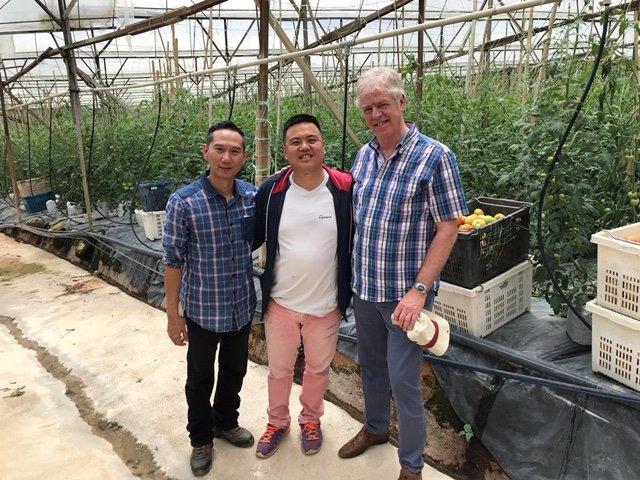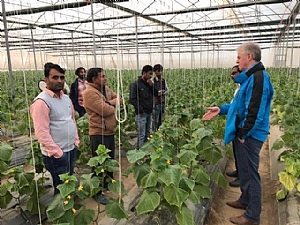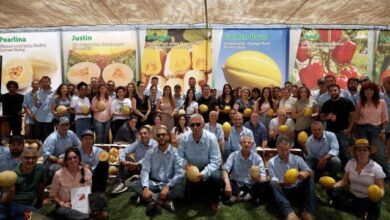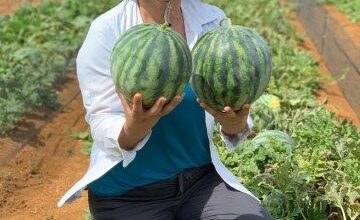Impressions of a Seed Company Engaged in the Asia & Pacific Regions
The art is to simultaneously unlock market opportunities and adapt to market characteristics
An interview with Mr. Cees Boon, Commercial Director Asia Pacific & South Africa for Hazera, part of the vegetable division of the Limagrain Group.

we met cees boon after a visit to the experimental plots in moshav nir chen, during the open day event held by hazera, an event that attracted representatives from 45 countries.
back in 2008, nickerson–zwaan – the company mr. boon worked for – and hazera genetics merged into one bu under one new brand: hazera. both companies were already members of the french limagrain group. following the merger, the company established six business units: east europe + central asia, west europe, the americas, africa, asia-pacific with south africa, and china. mr. boon serves as the director of the asia-pacific and south africa bu.
“each director is responsible for the overall sales and distribution of seeds in their assigned countries, through distributors or subsidiaries. one of the most important goals is to find new distributors. the name of the game is product development and technical support. when we introduce new varieties, we first give the growers seeds to experiment with, and only after one to two years this may lead to sales.
marketing also plays an important role in the assessment of trials and assortment development”.
“there are many cultural differences between the markets,” he explains. “the oceanian and south african markets are quite similar mentality-wise, and in both cases, the growers are large-scale growers who use advanced technologies. asia, on the other hand, is totally different.”
india – “the country’s several hundred million small growers pose a real challenge and opportunity.
this is due to difficulties in direct communication with growers about seed usage, long trade channels, language barriers and low seed prices. these challenges require extra efforts in responding to market needs and developing business.”
.jpg)
according to cees boon, the indian market is, however, undergoing changes in response to two main factors. the first, more than thirty percent of the food along the distribution chain is lost – spurring players to seek solutions for streamlining and improving their fresh food channels. the second is the water shortage, a problem that has exacerbated over recent years, that is “driving growers to replace flood irrigation methods with drip-irrigation. this is where hazera comes into play – through the use of hybrid seeds in various locations, we show how drip-irrigation impacts yields and secures crops.”

the indian market is characterized by its size and complexity, as well as extensive local competition in the seed industry and its breeding history. in response, hazera has strengthened its collaboration with hm clause, its partner in the limagrain group, and they work together in india to reach the critical mass necessary to successfully penetrate the market and become a major player in it.
japan – ‘’this is a very conservative, traditional market. the majority of growers are about 65 years of age, and adamantly hold on to their traditions and habits. despite some disappointments in introducing new and foreign varieties, we’ve witnessed some changes in new segments, with young growers entering the hi-tech tomato market and bringing advanced technologies. these growers trust foreign companies like hazera and understand that we are knowledge agents. the young japanese even travel overseas for training. very wise!”
korea – doing business in korea is more straightforward, with a market that is flexible and open to change. “although we’re a bit late in penetrating the korean market, we are pushing hard to catch up and striving to adapt our varieties to local market demands.”
“the art is to simultaneously unlock market opportunities and adapt to market characteristics: climate, demand, prices, and needs, while developing different business models. previously,” he adds, “hazera focused on the varieties for the european, american and middle eastern markets. currently, we are one of the world leaders in short cucumbers, for example, that are an important and diverse crop in asia”.
“hazera now understands the change asian markets are undergoing, and working in cooperation with our limagrain sister companies, we are placing much greater focus on the needs of this region in the development of new varieties. we are now joining forces with the regional subsidiaries to boost our activities in this exciting part of the seed world”.




